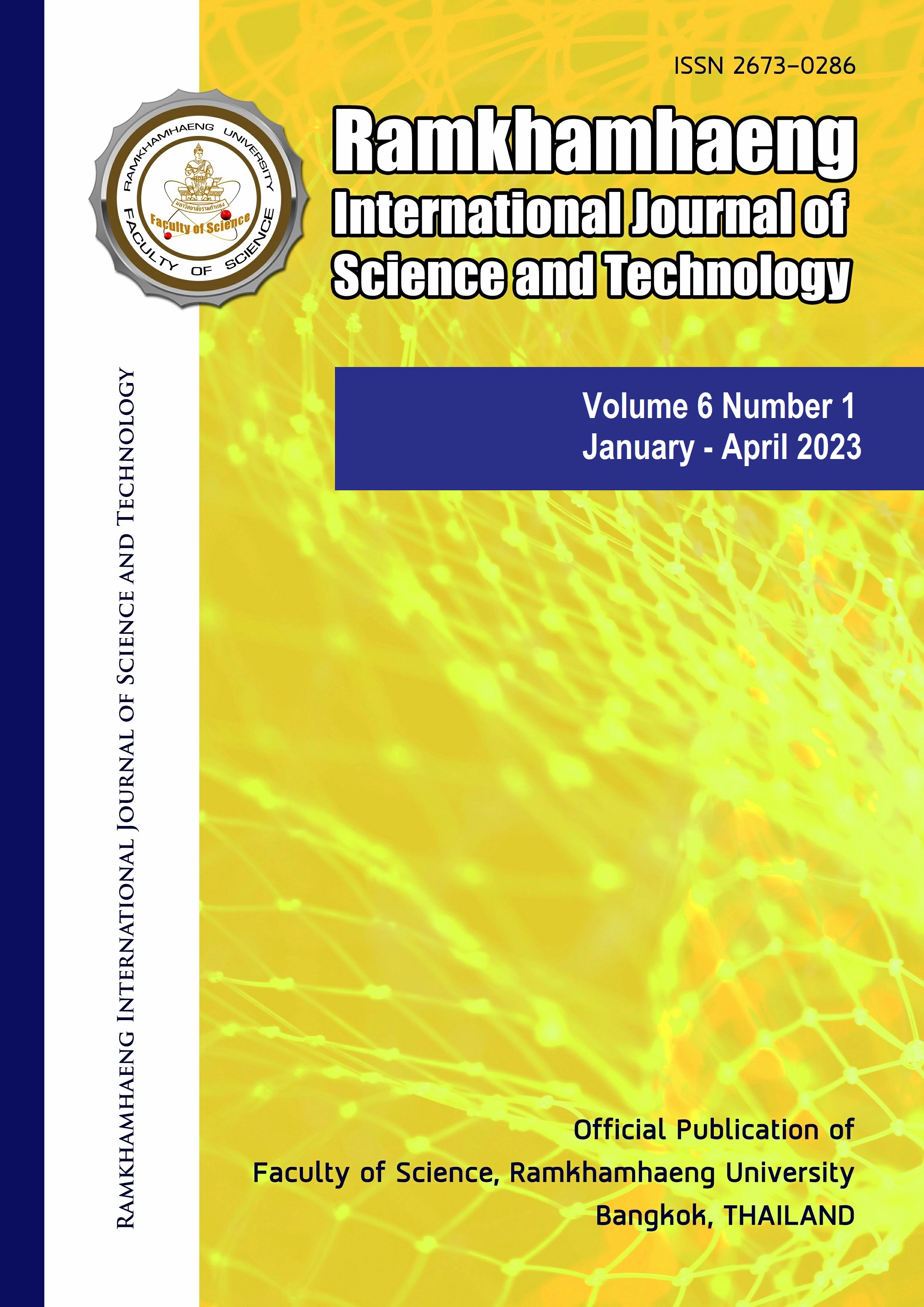Bioactive Potential of Myrothecium indunatum Isolated from Water Lettuce
Keywords:
free-floating aquatic weeds, phytopathogenic bacteria, phytopathogenic fungiAbstract
Myrothecium inundatum is a fungus capable of producing bioactive potential metabolites. This research aims to study the bioactive efficiency of M. inundatum isolated from diseased water lettuce. Five isolates of M. inundatum were isolated from blighted leaf of disease in the northern region province of Thailand. The first method, the dual culture test, was used to test the efficiency of M. inundatum for inhibiting phytopathogenic bacteria and phytopathogenic fungi. The result indicated that total M. inundatum could inhibit Xanthomonas sp. and R. solanaceae and total M. inundatum could inhibit Nigrospora sp., B. maydis, B. oryzae. On the other hand, 5 isolates of M. inundatum could not inhibit Sclerotium sp. In addition, M. inundatum were tested for pathogenicity on free-floating aquatic weeds. The result showed that 5 isolates of M. inundatum could cause disease severity in water lettuce and water hyacinth, but 5 isolates M. inundatum could not cause disease severity in duckweed. Therefore, bioactive potential of M. indunatum can be used in the development and be valued in agriculture and environment.
References
Anyanwu EC, Campbell AW, Ehiri JE (2004) Mycotoxins and antifungal drug interactions: implications in the treatment of illnesses due to
indoor chronic toxigenic mold exposures. The Scientific World Journal 4:167-177
Elkhateeb WA, Daba GM (2019) Myrothecium as promising model for biotechnological applications, potentials and challenges. Biomedical
Journal of Scientific & Technical Research 16(3):1-6
Hassan H, Mohamed MT, Yusoff, SF, Hata EM, Tajidin NE (2021) Selecting antagonistic yeast for postharvest biocontrol of Colletotrichum
gloeosporioides in papaya fruit and possible mechanisms involved. Agronomy 11: 1-17
Mondol MA, Islam MZ, Schuffler MT, Laatsch AH (2015) Macrocyclic trichothecenes from Myrothecium roridum strain M10 with motility
inhibitory and zoosporicidal activities against Phytophthora nicotianae. Journal of Agricultural and Food Chemistry
:8777-8786
Moreira MR, Ponce AG, de Valle CE, Roura SI (2005) Inhibitory parameters of essential oils to reduce a foodborne pathogen. LWT - Food
Science and Technology. 38:565-570
Naz S, Khan SN, Mohy-Ud-Din G, Farooq S (2015) In vitro fungicidal activity of aqueous extracts of crop and wasteland weeds against
Myrothecium roridum Tode, Pakistan journal of weed science research 21(3): 369-379
Office of Agricultural Economics (OAE) (2016) Agricultural Statistics of Thailand. Ministry of Agriculture and Cooperative, Office of
Agricultural Economics, Bangkok, Thailand.
Piyaboon O, Pawongrat R, Unartngam J, Chinawong A, Unartngam A (2016) Pathogenicity, host range and activities of a secondary
metabolite and enzyme from Myrothecium roridum on water hyacinth from Thailand. Weed Biology and Management 16:132-144
Senanayake IC, Rathnayaka AR, Marasinghe DS, Calabon MS, Gentekaki, E, Lee HB, Hurdeal VG, Pem D, Dissanayake LS, WijesinghemSN,
Bundhun D, Nguyen TT,
Goonasekara ID, Abeywickrama PD, Bhunjun CS, JayawardenamRS, Wanasinghe DN, Jeewonn R, Bhat DJ, Xiang MM (2020) Morphological
approaches in studying fungi: collection, examination, isolation, sporulation and preservation. Mycosphere 11(1): 2678–2754
Vidhate R, Singh J, Ghormade V, Chavan SB, Patil A, Deshpande MV (2015) Use of hydrolytic enzymes of Myrothecium verrucaria and
conidia of Metarhizium anisopliae, singly and sequentially to control pest and pathogens in grapes and their compatibility with
pesticides used in the field. Biopesticides International 11(1): 48-60.
Zambrano EC, Amanda SP, Ortiz, ÁM (2021) Biocontrol of rice sheath blight with microorganisms obtained in rice cultivated soils. Pant
protection 80, https://doi.org/10.1590/1678-4499.20200356
Downloads
Published
Issue
Section
License
Copyright (c) 2023 Ramkhamhaeng International Journal of Science and Technology

This work is licensed under a Creative Commons Attribution-NonCommercial-NoDerivatives 4.0 International License.
Copyright Notice: a copyright on any article in the published journal is retained by the Ramkhamhaeng International Journal of Science and Technology. Readers or Users grant the right to use of the Article contained in the Content in accordance with the Creative Commons CC BY-NC-ND license and the Data contained in the Content in accordance with the Creative Commons CC BY-NC-ND.



